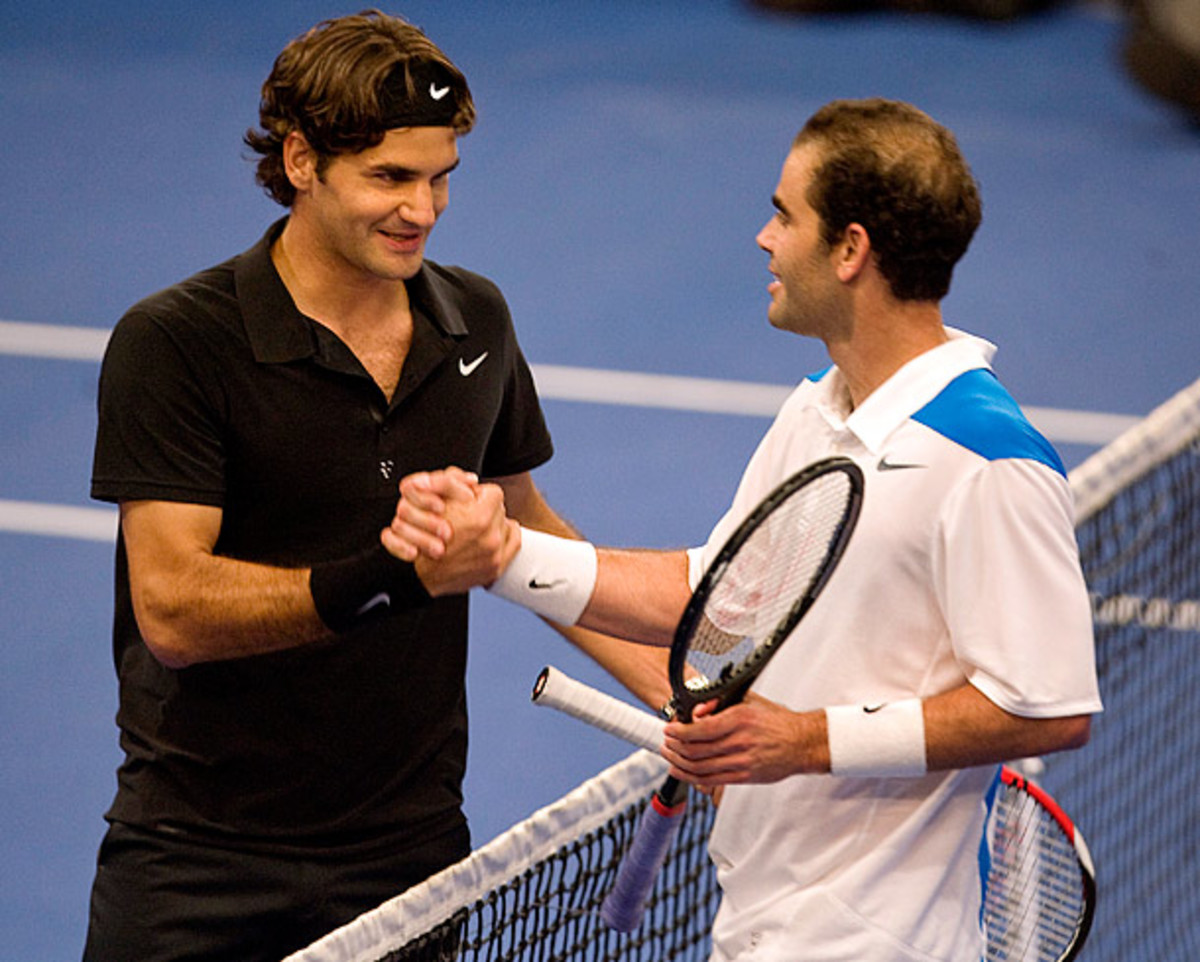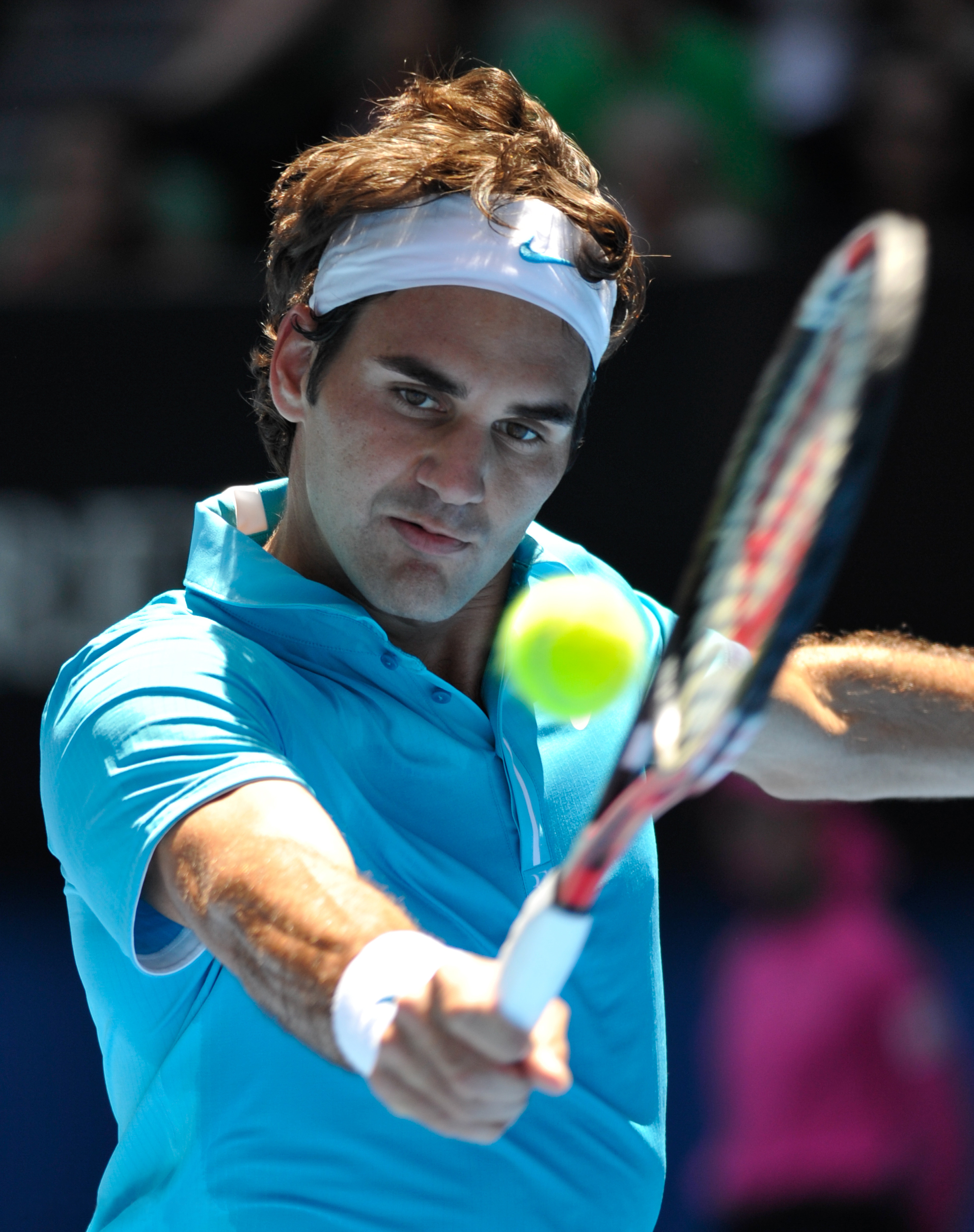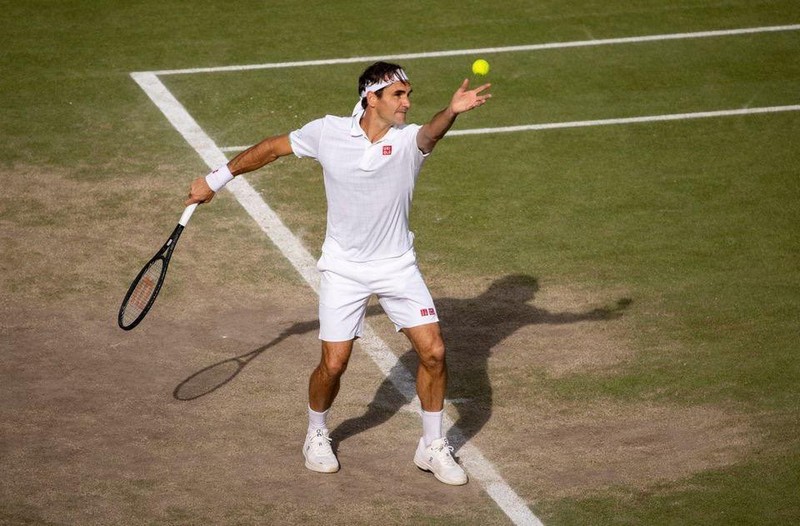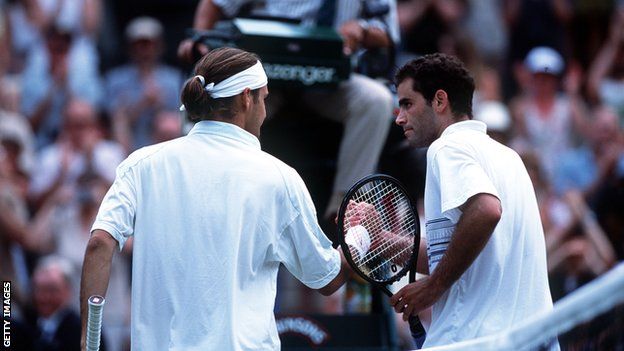Both Roger Federer and Pete Sampras are among the greatest tennis players of all time. Sampras amassed 286 weeks as the World No. 1 and won 14 Grand Slams in his illustrious career. On the other hand, Federer was at the helm for 302 weeks and ended his career with 20 Grand Slam titles.
![Amazon.com: The Netjets Showdown: Pete Sampras vs. Roger Federer [DVD] : John McEnroe, Pete Sampras, Roger Federer, n/a: Movies & TV](https://m.media-amazon.com/images/I/61rFcv4ky2L._AC_UF894,1000_QL80_.jpg)
However, the one common thing between them was the clay being their least favored surface. Had it not been for their relative weakness on clay, they would have finished with even more titles and achievements.

Federer has a better record than Sampras on clay
Federer, however, won a French Open title, a feat that Sampras was never able to achieve. Robin Soderling beating Rafael Nadal in 2009 made sure that the Swiss did not have to play his nemesis on the surface that year. Notably, Federer reached five French Open finals in all, losing to Nadal on four occasions.

Federer has also won six Masters 1000 titles on clay in an era that saw Nadal ply his trade on the surface. Those numbers are much more impressive than Sampras’, who never made it to the final at Roland Garros and only managed to win a solitary Masters title on clay in Rome.

His other famous achievement on clay was winning his matches against Russia to help the United States win the tie in 1995. Hence, in terms of achievements on the surface, Federer clearly betters Sampras.

The Swiss was more of a baseliner than the American ever was
Although Federer was an all-court player who excelled on grass and faster surfaces, he was more of a baseliner than Sampras ever was. Sampras’ serve-and-volley style was less effective on clay. His famous serve, which was probably the most effective shot in the history of tennis, ceased to be a weapon on the slow red dirt.

Moreover, the clay-court specialists also had more time on clay to play their passing shots against an advancing Sampras. The American’s one-handed backhand struggled to deal with the extra bounce on the surface, and so did Federer’s, especially against Nadal’s crosscourt forehands.

However, the Swiss managed to stay on the baseline, more often than Sampras did, and engage in exchanges from there. As a result, he was more comfortable playing on the surface than the American was.

Additionally, there were more clay-court specialists like Thomas Muster, Sergi Bruguera and Marcelo Rios in the 1990s, thus making it even more difficult for Sampras to fare well on the surface.
Although the American famously beat Bruguera at the French Open in 1996, it was a rare occurrence as he struggled against the clay-court specialists in general. Thus, we can easily conclude by saying that Federer was the better player of the two on clay.
News
Selena Gomez’s new love once made a controversial statement about her to flatter Justin Bieber?
After a long period of being single, Selena Gomez has finally announced her new boyfriend, Benny Blanco. The female singer shared a photo of her head resting on her new boyfriend’s shoulder, liked an image with the caption “Selena Gomez…
Selena Gomez considers Benny Blanco a “rare commodity”, why does she not hesitate to praise him to the sky?
Selena Gomez is having a sweet romance with singer, rapper and producer Benny Blanco. On December 7, on her personal page, the Wolves singer announced her relationship with Benny Blanco, with an image of her intimately locking lips with her…
Selena Gomez posted bikini photos comparing her body after 10 years
31-year-old singer and actress Selena Gomez posted two photos showing her body changing over time and said she loves herself whether thin or fat. On Instagram Story on January 23, Selena posted bikini photos from then and now. In a…
Selena Gomez Shrugs Off Instagram Crown: “It’s Not About the Numbers”
At Thrive Global’s recent Music and Health Conference, Instagram queen Selena Gomez revealed that she has never really cared about becoming the most followed person on the social networking platform. “I’m grateful for this platform and I want to continue…
What Selena Gomez Doesn’t Want the World to See: The Real Reason She Avoids Documentaries
At Universal Music Group’s Music & Health conference, Selena Gomez recalled the documentary about her life called My Mind & Me. Accordingly, she admitted that she did not dare to watch these videos again because she could not face the…
Selena Gomez Unhappy with Today’s Beauty Standards: Can She Make a Difference?
Participating in the Time100 Summit, Selena Gomez shared about her experience struggling with today’s unrealistic beauty standards. Selena Gomez admitted that she used to be someone who chased standards, but she gave up after realizing their absurdity. “Personally, I feel…
End of content
No more pages to load











